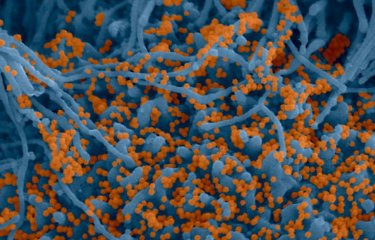-
Document de presse | 2011.05.15
Graft rejection at the cellular level filmed in 3D
Using a new and original in vivo imaging technique enabling real-time, in-depth, cellular immune response mechanism investigation in animals, researchers from the Institut Pasteur and Inserm have been the first to observe the process of graft rejection. Observing this "cellular choreography" has most notably proven the existence of a mechanism that contributes to the immune reaction...
-
Document de presse | 2011.03.31
AREVA Foundation and Institut Pasteur sign a new partnership agreement for Aids research
AREVA Foundation continues to fight Aids alongside the Institut Pasteur in 2011. Two new Institute teams will benefit from the continuing partnership: • the team led by Professor Olivier Schwartz, who directs the Virus and Immunity Research Unit • the team of Dr. Michaela Müller of the Retroviral Infection Regulation Unit directed by Professor Barré-Sinoussi, Nobel Prize in Medicine....
-
Document de presse | 2011.03.06
Powerful human DNA mutators identified
Scientists from the Institut Pasteur, the French National Center for Scientific Research (CNRS), and the French National Institute for Health and Medical Research (Inserm) have shown that a cellular protein, APOBEC3A, known for its antiviral activity, is also capable of mutagenic activity on human cell DNA. This discovery suggests that this protein plays a role in the cellular DNA degradation...
-
Document de presse | 2011.02.20
Unsuspected immune arsenal in infants
While completely protected from any infectious germs in their mother’s womb, fetuses spontaneously develop, “in advance”, an immune defense system ready to react to the bacterial colonization of their digestive tract at birth. This surprising observation made by scientists at the Institut Pasteur and the French National Center for Scientific Research (CNRS) also shows that this...
-
Document de presse | 2011.02.03
Discovery of a new group of highly susceptible malaria mosquitoes in Africa
In the course of a large genetic study of malaria vector mosquitoes in Burkina Faso, West Africa, researchers at the Institut Pasteur, the French National Center for Scientific Research (CNRS) and their collaborators have discovered a new subspecies of the mosquito Anopheles gambiae, the world’s most important malaria vector. This new mosquito group, which may be an especially...
-
Document de presse | 2011.01.19
3D structure leads to first decoding of mechanism of action of general anesthetics
Two teams from the Institut Pasteur in association with the French National Center for Scientific Research (CNRS) have published in the journal Nature the three-dimensional structure of two general anesthetics bound to their membrane receptor. This research provides the first atomic-resolution structures of general anesthetics which can be used to understand their action mechanism, a mechanism...
-
Document de presse | 2011.01.02
Hepatitis C : in 2011, a predictive marker for response to therapy
Scientists at Inserm and Institut Pasteur have performed biomarker discovery on patients being treated for chronic hepatitis C infection. Their work, published in The Journal of Clinical Investigation, demonstrates that the plasma levels of the protein IP-10 predict, prior to treatment initiation, the efficacy of treatment with pegylated-interferon and ribavirin. Based on these results, the...
-
Document de presse | 2010.12.14
The brain: light-controlled neo-neurons
Researchers at the Institut Pasteur in association with the CNRS have just shown, in an experimental model, that newly formed neurons in the adult brain can be stimulated by light. A novel technique associating optical and genetic tools allows neurobiologists to render neo-neurons photo-excitable. For the first time they have prompted, observed, and specifically recorded the activity of...
-
Document de presse | 2010.12.01
Identification of the 3D structure of chikungunya virus surface proteins
Researchers at the Institut Pasteur and CNRS, in collaboration with the Synchrotron SOLEIL, have solved the three-dimensional atomic structure of the glycoproteins that envelop the chikungunya virus. This discovery helps to understand how this protein complex is activated in order for the virus to invade target cells. Activation is a key stage in the viral life cycle and understanding its...
-
Document de presse | 2010.11.16
Stem cells and genetic programming : lessons from fundamental research
Scientists at the Institute Pasteur and CNRS have identified key regulatory factors controlling one of the critical developmental processes occurring during embryo development : X-inactivation, which ensures the silencing of the genes carried by one of the two X chromosomes present in all cells of female mammals. These regulatory factors are also implicated in maintaining the capacity...


